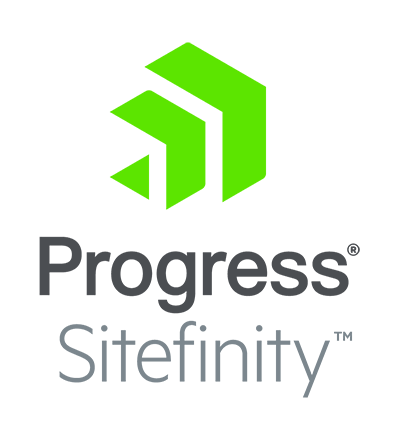Introduction
AEM (Adobe Experience Manager) and Sitefinity are both content management systems (CMS) that offer a range of features to help businesses create, manage, and deliver digital content. While both platforms have some similarities, there are also significant differences between them. Here is a detailed comparison of AEM and Sitefinity:
 |
User Interface and Ease of Use
AEM has a complex user interface that can be overwhelming for beginners. It offers a range of features, including an extensive library of pre-built templates, drag-and-drop functionality, and customizable components. Sitefinity's interface is more user-friendly, with a modern and intuitive design that makes it easy for users to navigate the system. It also offers a range of pre-built templates and drag-and-drop functionality.
Scalability
AEM is a highly scalable platform that can handle large volumes of content and traffic. It is designed for enterprise-level organizations with complex requirements. Sitefinity is also a scalable platform but is better suited for mid-sized businesses with simpler requirements. With the introduction of the .NET Core Frontend tier in Sitefinity in 2023, the scalability of the product is now decoupled from the backend and can be scaled significantly on Windows, Linux and Mac machine.
Integration Capabilities
AEM has extensive integration capabilities with other Adobe products, including:
- Adobe Analytics
- Adobe Target
- Adobe Campaign
It also has a strong API that enables integration with third-party systems. Sitefinity offers integrations with a range of third-party systems, including:
- Salesforce
- Microsoft Dynamics
- Oracle Eloqua
- HubSpot
- Marketo
Customization
AEM offers a high level of customization, with a range of developer tools and APIs that allow users to create custom functionality and integrations. Sitefinity has 3 levels of APIs and uses the power of .NET to customize the system using Standard APIs, Fluent APIs and Web Services APIs (Headless System).
Content Management
Both AEM and Sitefinity offer robust content management capabilities, including content creation, editing, and publishing. They both have advanced content management features, such as multi-channel publishing and content personalization.
Security
Both AEM and Sitefinity have strong security features, including role-based access control, SSL encryption, user authentication and connectors to LDAP. Sitefinity also has a built in module to manage security for trusted content using CORS that is granular based on the type (Css, Javascript, Frames, Images, Videos, etc...)
Support and Community
AEM has a large community of users and developers who provide support and contribute to the platform's development. It also has comprehensive documentation and support resources. Sitefinity also has a community of users and developers, but it is not as large as AEM's community.
AEM Technology Stack
AEM is built on top of the Apache Sling framework, which is a RESTful web application framework. It also uses Apache Felix as its OSGi (Open Services Gateway initiative) runtime environment. The platform uses Java as its primary programming language and is built on top of the Apache Jackrabbit content repository. AEM also has extensive integration capabilities with other Adobe products, including Adobe Analytics, Adobe Target, and Adobe Campaign.
Sitefinity Technology Stack
Sitefinity is built using Microsoft .NET technology, with C# as the primary programming language. It uses the ASP.NET framework, MVC and .NET Core and runs on top of the IIS (Internet Information Services) web server. It provides a range of pre-built modules and components for building websites and capable of deploying the backend and the frontend in separate tiers with great scalability. The platform offers integrations with a range of third-party systems, including Salesforce, Microsoft Dynamics, and Oracle Eloqua, Hubspot, Marketo.
Pricing
The pricing for AEM and Sitefinity can vary based on a range of factors such as the specific edition or version, the number of users or sites, and the level of support required. Here's a general overview of the pricing structures for each platform:
AEM is a high-end enterprise-level platform and its pricing reflects this. The platform is available through a subscription-based model, with pricing starting at around $100,000 per year for the Standard edition and increasing for the Pro and Enterprise editions. The pricing can also increase based on factors such as the number of websites or the amount of traffic.
Sitefinity is generally more affordable than AEM, with pricing starting at around $9,000 per year for the DX edition. The pricing can increase based on factors such as the number of sites or the level of support required. Sitefinity also offers a range of optional add-ons, such as e-commerce functionality or multisite management, which can increase the overall cost. Sitefinity also has a cloud offering like AEM that provides fully managed instances for companies.
Summary
In summary, AEM is built on top of the Apache Sling framework and uses Java as its primary programming language. It has extensive integration capabilities with other Adobe products. Sitefinity, on the other hand, is built using Microsoft .NET technology and uses C# as its primary programming language. It uses the ASP.NET framework and runs on top of the IIS web server. Both platforms have different underlying technologies and frameworks, which can affect factors such as scalability, customization, and integration capabilities.
AEM and Sitefinity have different feature sets and capabilities, so the pricing should be considered in the context of each platform's specific offerings. Ultimately, the choice between AEM and Sitefinity may come down to a balance between the features required and the available budget.
Reach out to me and let's have a chat about the different capabilities of these great CMS systems (AEM, Sitecore, Kentico, Sitefinity, Octane, Orchard, ContentStack and others...)
About the Author
